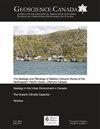地球科学教育#7。GeoTrails:可访问的扩展和教育在线工具
IF 0.8
4区 地球科学
Q3 GEOSCIENCES, MULTIDISCIPLINARY
引用次数: 0
摘要
作为地球科学家,我们必须优先提高我们向公众传播科学的能力。有效的地球科学交流使社区能够了解地质过程如何塑造我们的星球,并对地球的未来做出明智的决定。然而,地球科学的研究成果传统上发表在同行评议的期刊上,并在学术会议上发表。因此,关于当地地质的基本信息很少以可访问的、开放的和引人入胜的形式提供。在这里,我们提出虚拟实地考察,或“GeoTrails”,作为一种可能的解决方案,通过改善我们与公众的沟通来解决地球科学研究与公众知识之间的脱节。这项倡议主要是由本科生推动的,他们在选定的徒步旅行路线上确定地质兴趣点,根据科学来源(如较长的同行评审文章和政府报告)撰写简明的描述,并收集实地数据(如3-D激光雷达模型,无人机摄影)来说明这些地质特征的特征。该项目的目标是传达当地地质对我们环境的重要性,并提高人们对气候变化如何影响我们未来的认识;这些信息可以帮助社区做出更好、更明智的规划决策。沿着尼亚加拉悬崖的地质小径的创建提供了一个有前途的战略,以突出地球科学家的作用,并吸引公众参与我们正在进行的旨在展示加拿大地质遗产的研究。本文章由计算机程序翻译,如有差异,请以英文原文为准。
Earth Science Education #7. GeoTrails: Accessible Online Tools for Outreach and Education
As geoscientists, we must prioritize improving our ability to communicate science to the public. Effective geoscience communication enables communities to understand how geological processes have shaped our planet and make informed decisions about Earth’s future. However, geoscience research outputs have traditionally been published in peer-reviewed journals and presented at academic conferences. Consequently, essential information about local geology is rarely available in accessible, open access, and engaging formats. Here, we propose virtual field trips, or ‘GeoTrails’, as a possible solution to address the disconnect between geoscience research and public knowledge by improving our communication to the public. This initiative is largely driven by undergraduate students, who identify points of geological interest along selected hiking trails, write concise descriptions derived from scientific sources (e.g. longer peer-reviewed articles and government reports), and collect field data (e.g. 3-D LiDAR models, drone photography) to illustrate the characteristics of these geological features. The goal of the project is to communicate the importance of local geology on our environment and to raise awareness of how changing climates could affect us in the future; this information can empower communities to make better, more informed planning decisions. The creation of GeoTrails along the Niagara Escarpment offers a promising strategy to highlight the role of geoscientists and to engage the public in our ongoing research that aims to showcase Canada’s geoheritage.
求助全文
通过发布文献求助,成功后即可免费获取论文全文。
去求助
来源期刊

Geoscience Canada
地学-地球科学综合
CiteScore
3.30
自引率
0.00%
发文量
9
审稿时长
>12 weeks
期刊介绍:
Established in 1974, Geoscience Canada is the main technical publication of the Geological Association of Canada (GAC). We are a quarterly journal that emphasizes diversity of material, and also the presentation of informative technical articles that can be understood not only by specialist research workers, but by non-specialists in other branches of the Earth Sciences. We aim to be a journal that you want to read, and which will leave you better informed, rather than more confused.
 求助内容:
求助内容: 应助结果提醒方式:
应助结果提醒方式:


